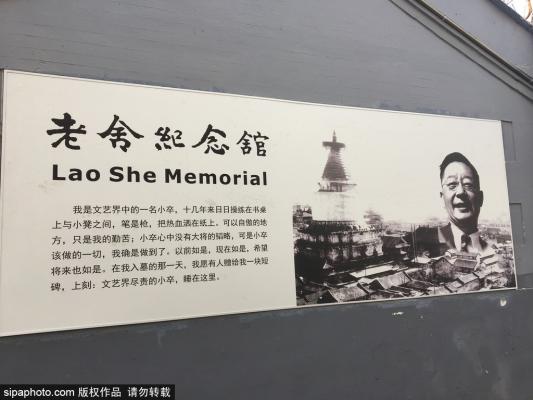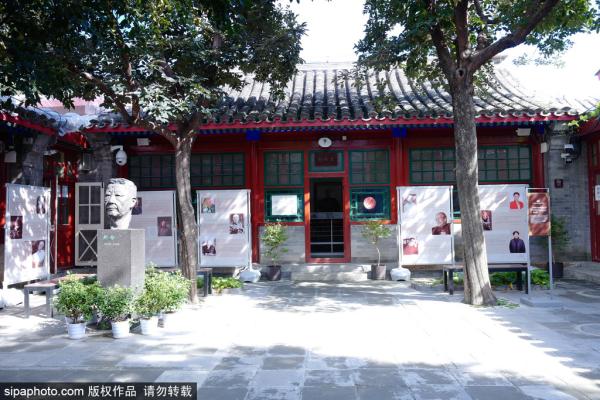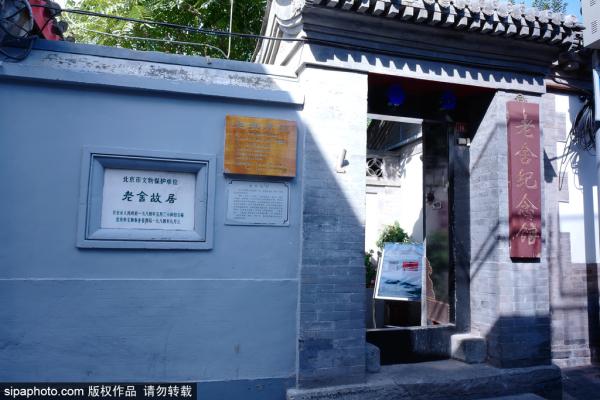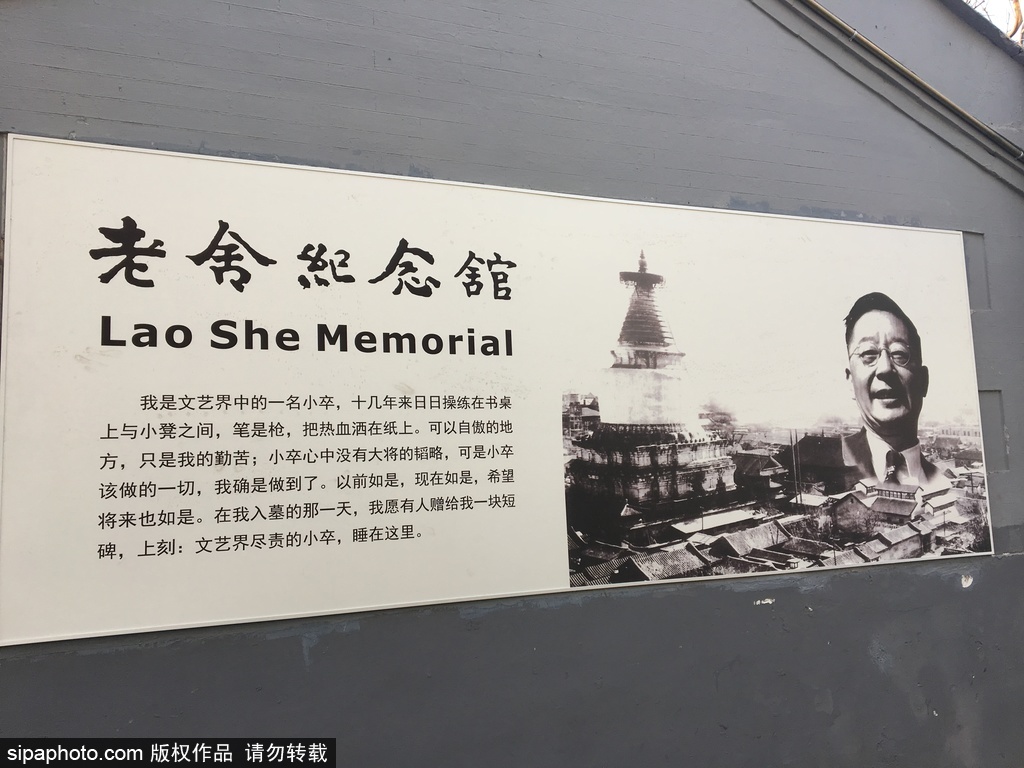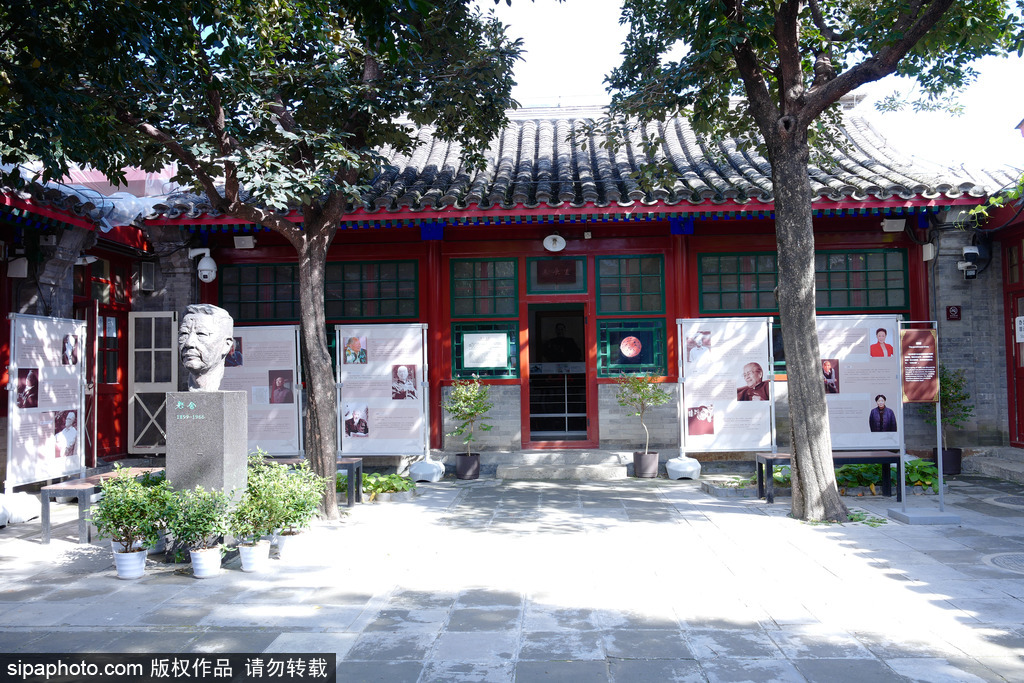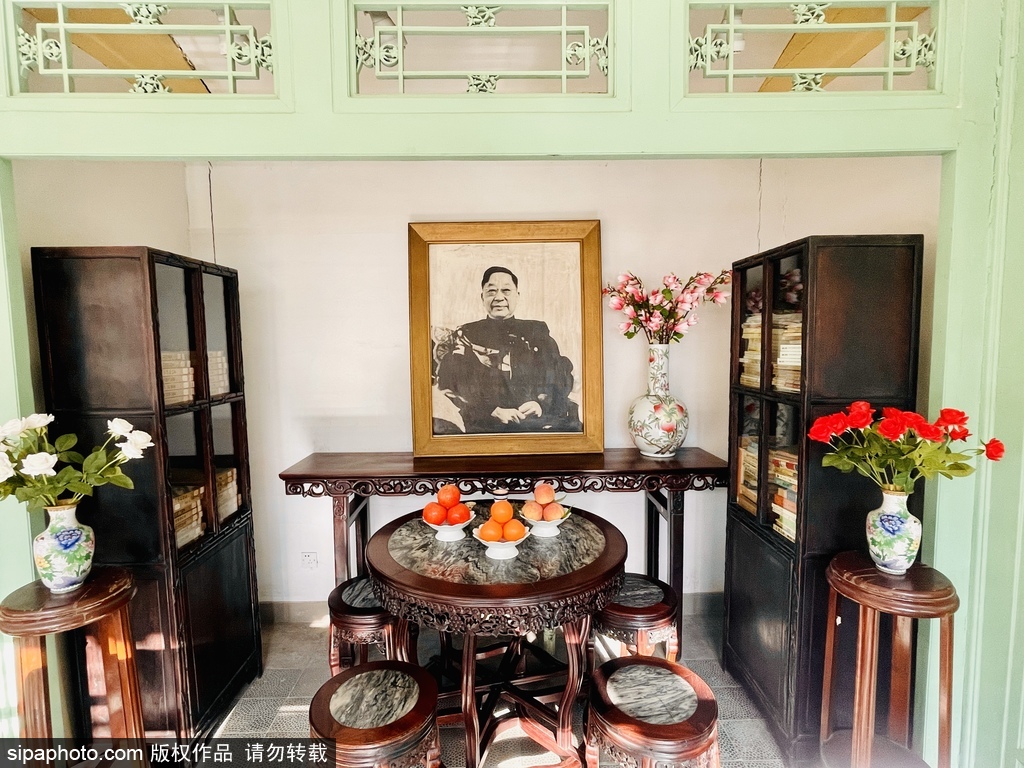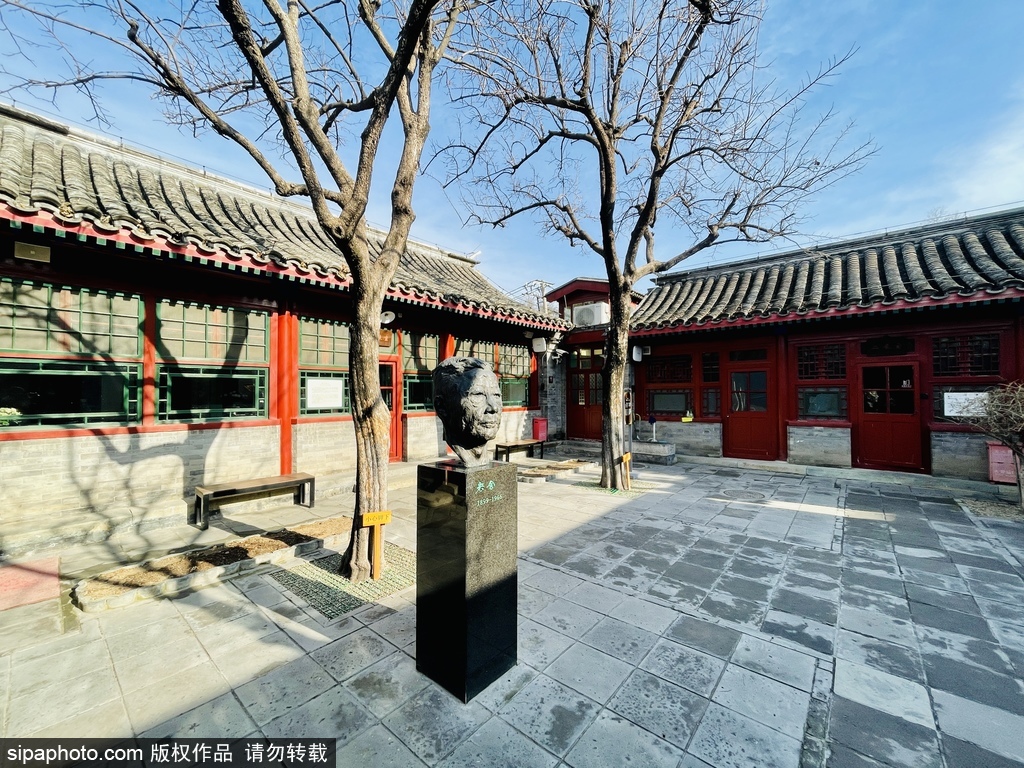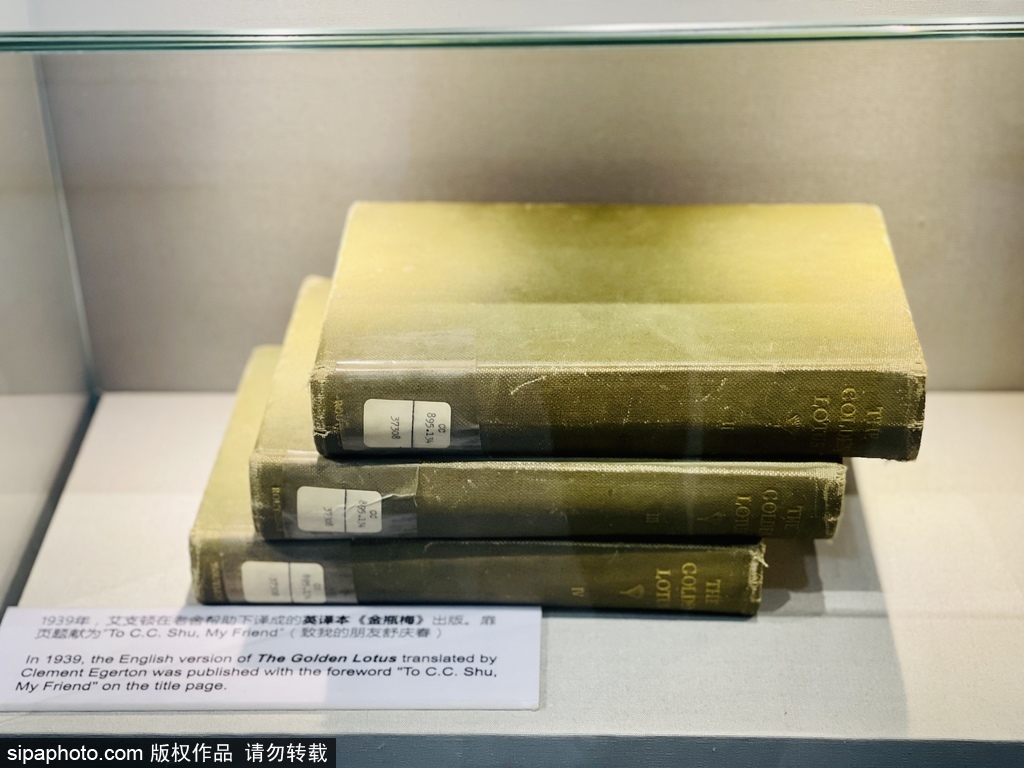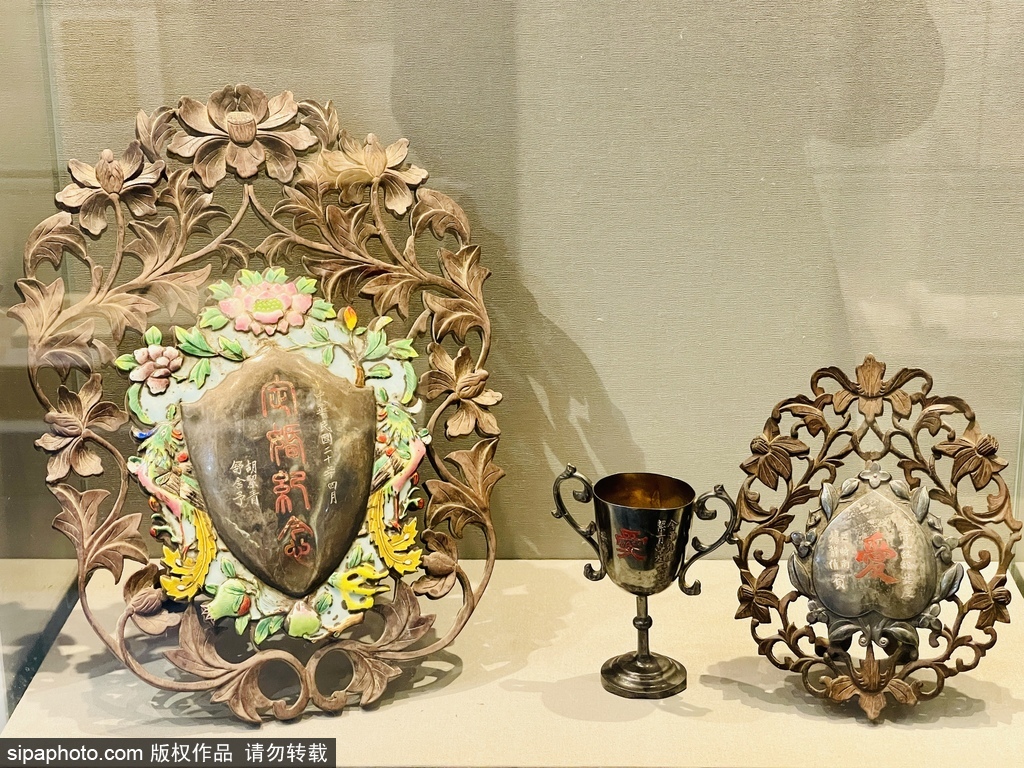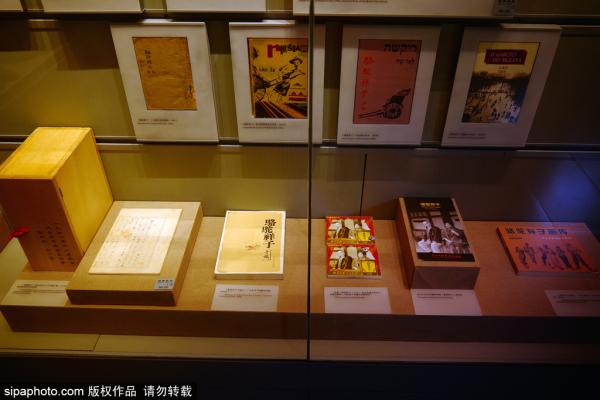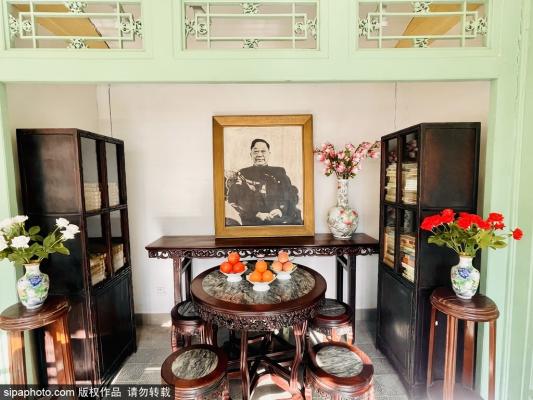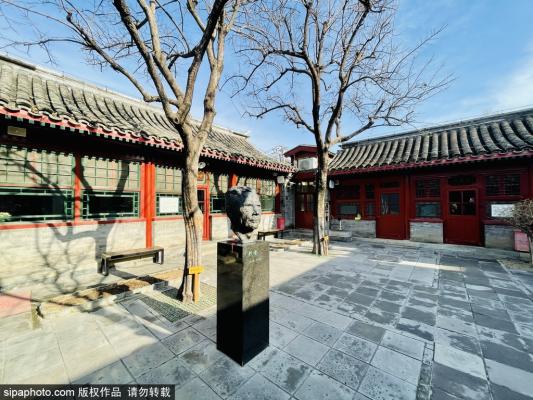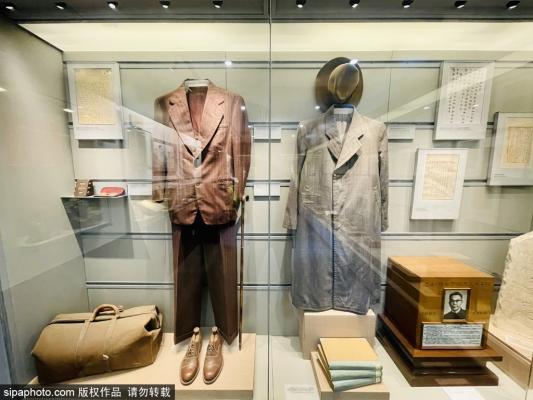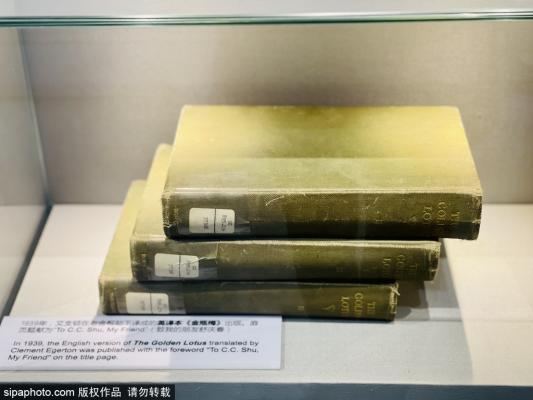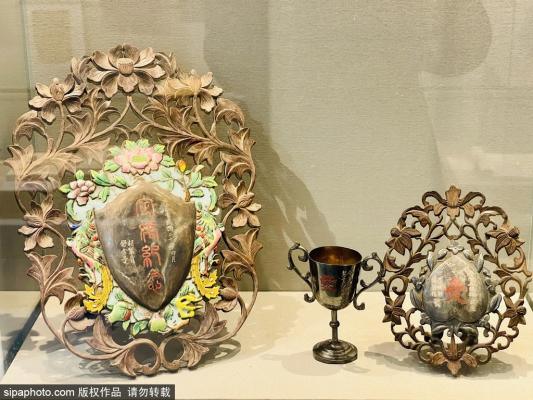Lao She Memorial(老舍纪念馆)

-
Type:
History -
Tel:
010-65599218 -
Opening Hours:
9:00 - 17:00 (No entry from 16:30)
Description
Lao She Memorial(老舍纪念馆)
The Lao She Memorial is one of the historic sites under Beijing Municipal protection. It is located in Fengfu Lane, West St., Dengshikou, Dongcheng District. In 1950, after returning from America, Lao She bought it and lived here for 16 years. It is in this house that he wrote 24 plays, including "Longxu Ditch", "Teahouse", and "Beneath the Pure Red Banner", and two novels. These works total about 4 million words. On Feb. 1, 1999, the 100th anniversary of Lao She’s birth, the Memorial was opened...
Read MoreLao She Memorial(老舍纪念馆)
The Lao She Memorial is one of the historic sites under Beijing Municipal protection. It is located in Fengfu Lane, West St., Dengshikou, Dongcheng District. In 1950, after returning from America, Lao She bought it and lived here for 16 years. It is in this house that he wrote 24 plays, including "Longxu Ditch", "Teahouse", and "Beneath the Pure Red Banner", and two novels. These works total about 4 million words. On Feb. 1, 1999, the 100th anniversary of Lao She’s birth, the Memorial was opened to the public.
Lao She (1899-1966) was a novelist and playwright. His original name was Shu Qingchun, and his courtesy name was She Yu. He was born and raised in Beijing. Before the Japanese invasion he had successively been the principal of a primary school, a teacher at the Oriental College of London University, and a professor first at Qilu University, then at Shandong University. During the war against the Japanese invasion, as head of the National Association of Writers and Artists Against Invaders, he played an active part in mobilizing writers and artists for anti-Japanese propaganda. After the war was won, he went to America for lecturing and writing. After he returned to China in 1949, he held such posts as member of the Literature, Art, and Education Committee of the Political Affairs Department, deputy chairman of the National Association of Literature and Art, deputy chairman of the National Writers’ Association, and chairman of the Beijing Association of Literature and Art. As a prolific writer, he enjoyed such a high reputation among common people that he was awarded the title ‘People’s Artist’. He died in 1966.
The Memorial is a typical ‘Siheyuan’ (Quadrangle Dwelling). It covers an area of 400 square meters. The most special thing about it is a rich exhibition entitled ‘Lao She’s Life and Works’.
Entering the east-facing gate of the Memorial you’ll see a gray brick screen wall and two southern chambers. Enter the second gate and you’ll see a small, colored wooden screen wall, a rarity in Beijing today. Walk around it and you’ll find yourself in the main part of the memorial hall. There are three principal chambers in the courtyard. The outer room and west room served as living rooms, and the east room was the bedroom and studio of Hu Jieqing, Lao She’s wife. The west side room, which used to be Lao She’s bedroom and study, is open to visitors with its original furnishings. The east house and west house in the courtyard serve as the exhibition hall No. 1 and 2, in which are displayed a great deal of valuable manuscripts, books, photos, and other relics reflecting Lao She’s life and writing career. The memorial hall mainly serves to protect the writer’s former residence and the relics he left. It also holds exhibitions for primary or middle school students, the theme of which is what Lao She’s wife said of her husband: ‘He was born and raised in Beijing, died in Beijing, and devoted his life to writing about Beijing.’
Latest News
Explore
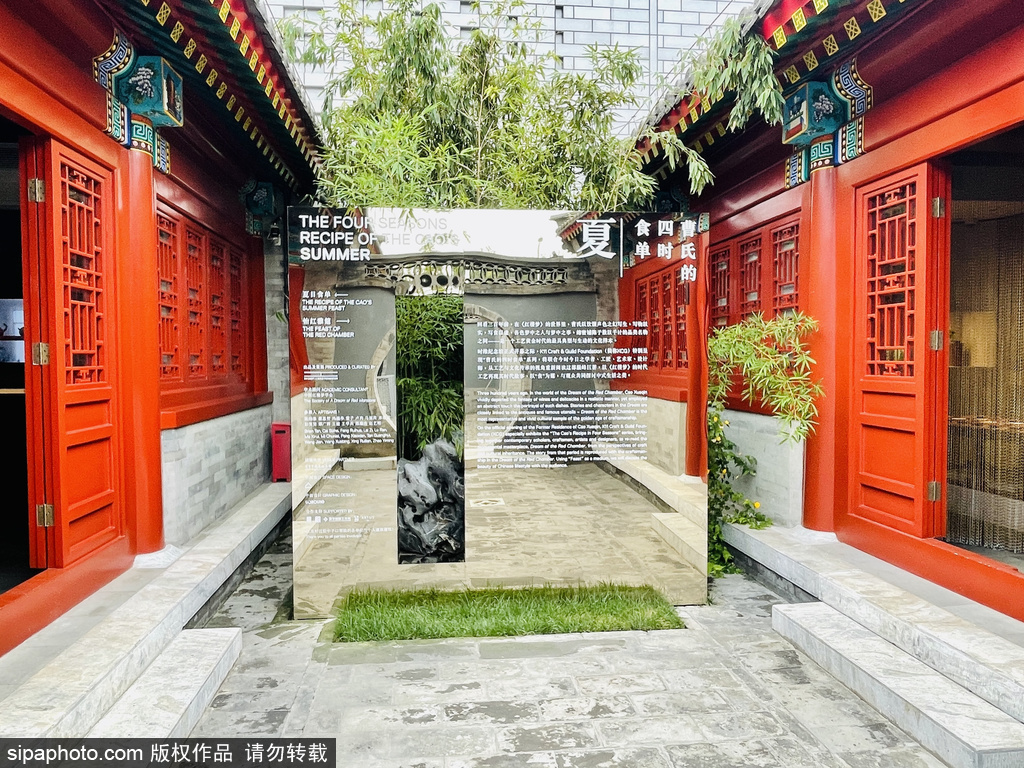
Memorial Hall of Cao Xueqin's Former Residence
The memorial hall is the only site of Cao Xueqin's former residence with the Qing Dynasty archives, the "Complete Map of Beijing", and remains and relics that can be found. The entire memorial hall is a traditional three-entry quadrangle courtyard, covering an area of about 790 square meters and a construction area of about 440 square meters.
Mei Lanfang Memorial Hall
Mei Lanfang’s Former Residence which has been preserved as Mei Lanfang Memorial is situated at No.9 Huguosi Street of Xicheng District in Beijing.
Guo Shoujing Memorial Hall
Guo Shoujing Memorial Hall is located in the Huitongci Temple, northern of the Shichahai Xihai. There are four exhibition halls in the memorial. The first one introduces Guo Shoujing's no ordinary life and the second the formation of Jishuitan.
Do You Know
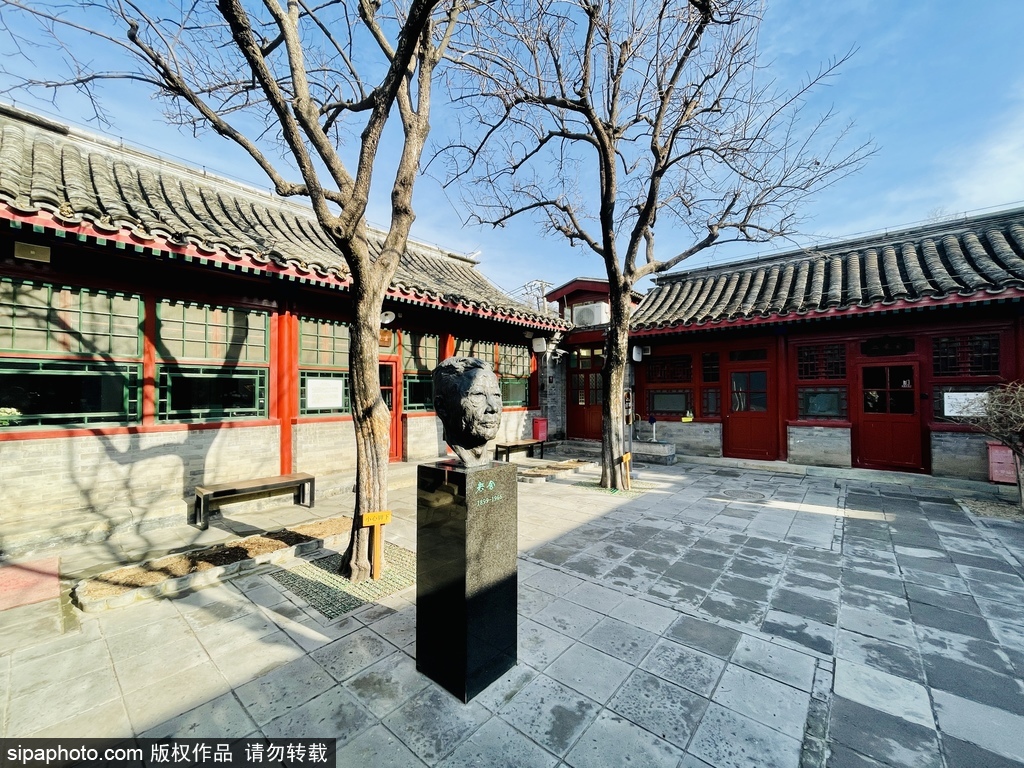
What did Lao She write in the study here?
In the small study, Lao She wrote the famous dramas "Fang Zhenzhu", "Dragon Beard Ditch", "Teahouse", "Looking to Chang'an in the West" and "Family Portrait", as well as "God" in memory of his father. Boxing" and more than 20 plays. In addition, there are a large number of poetry, essays, and the unfinished autobiographical novel "The Flag of Zhenghong".
